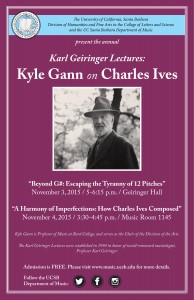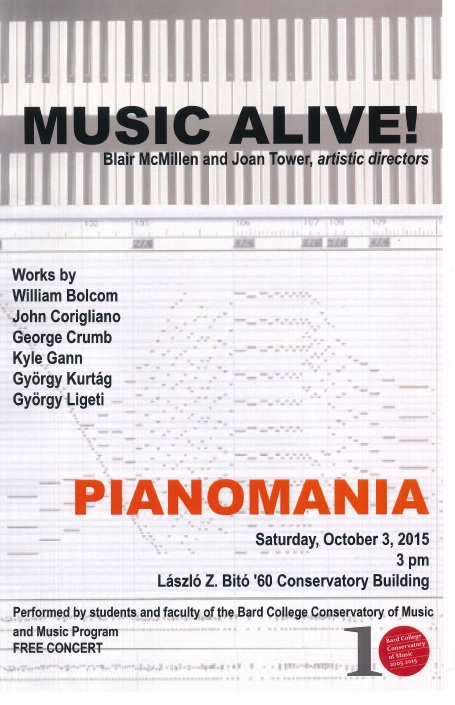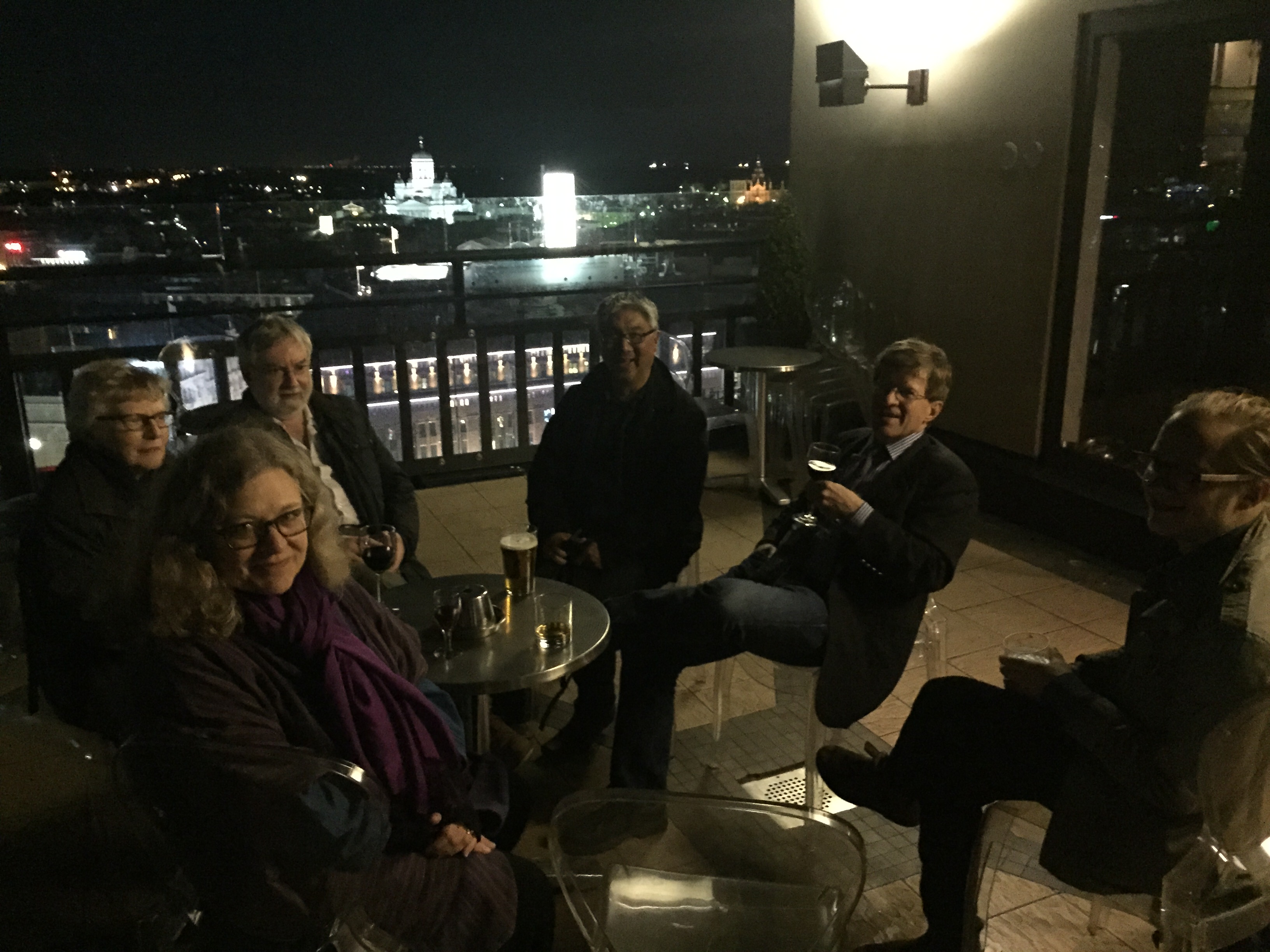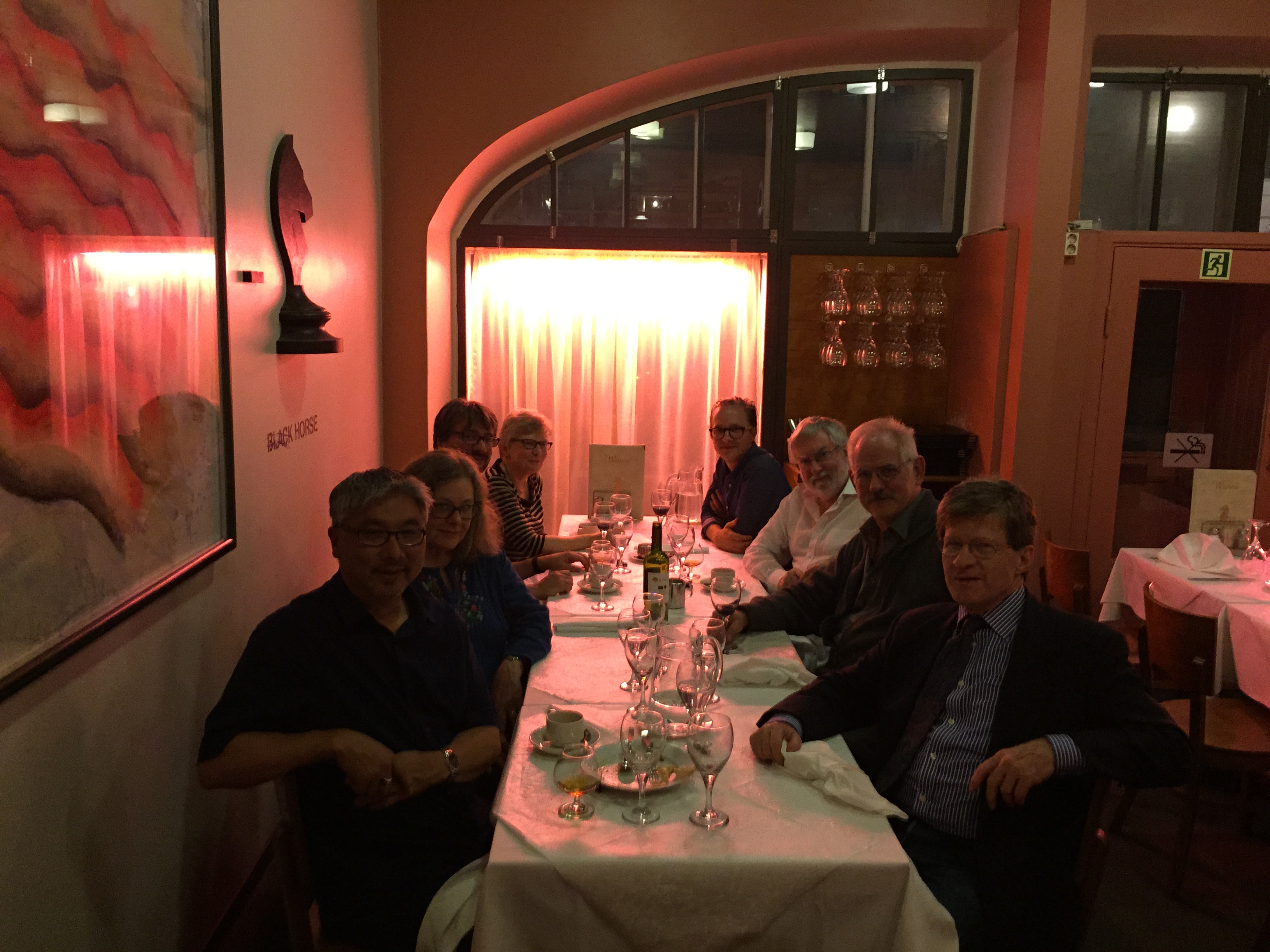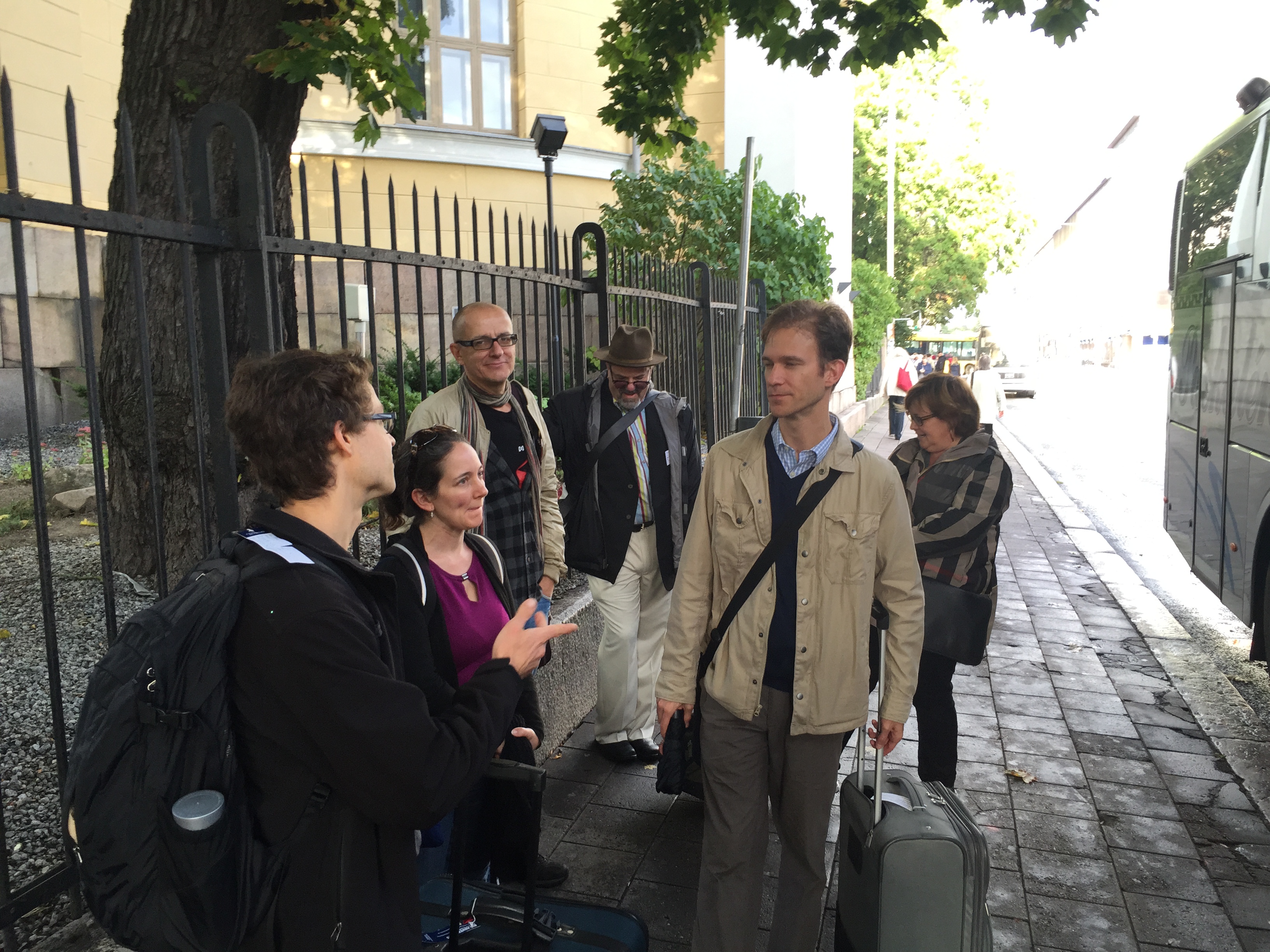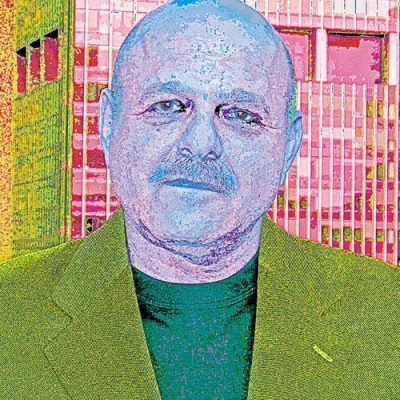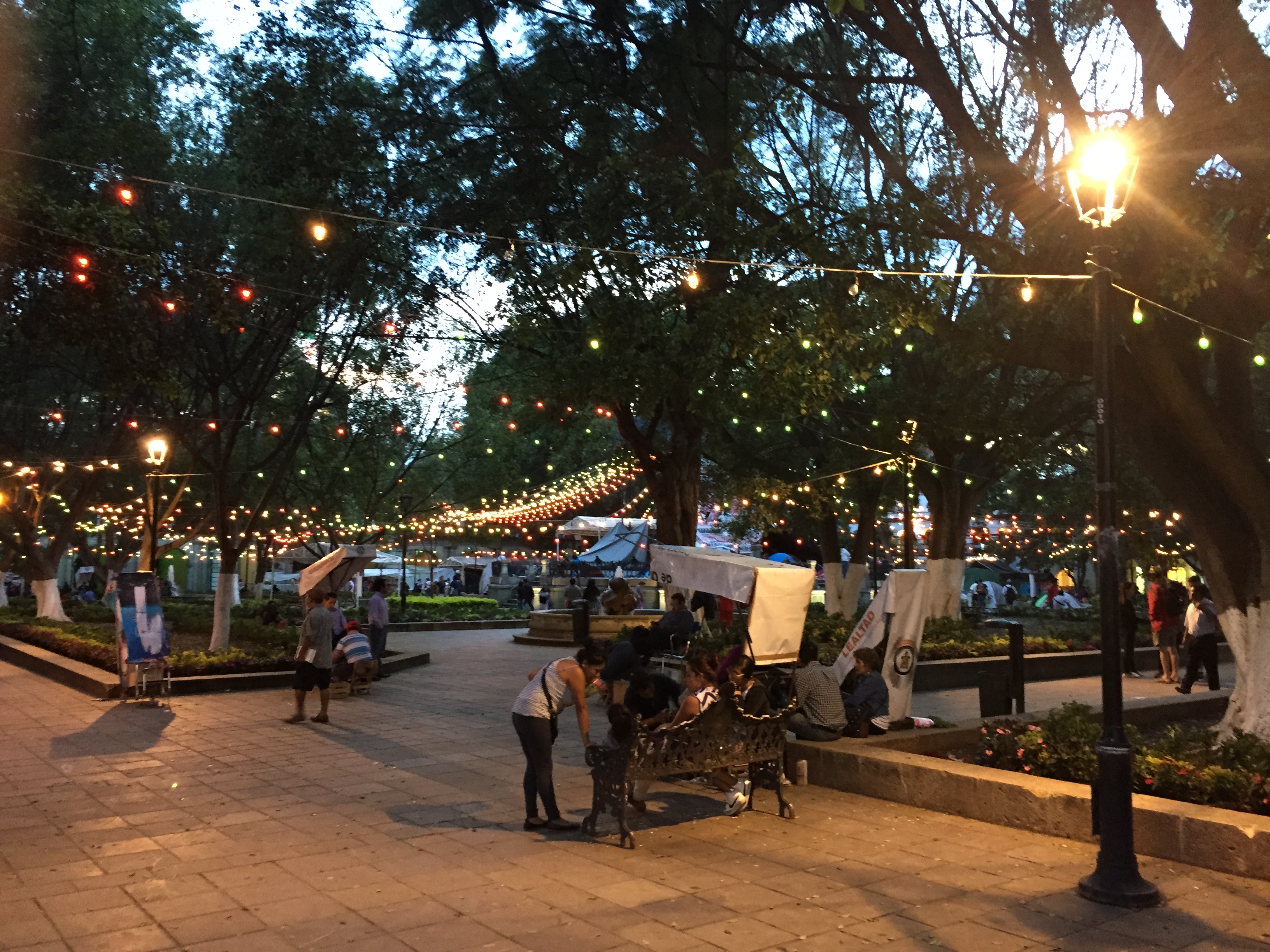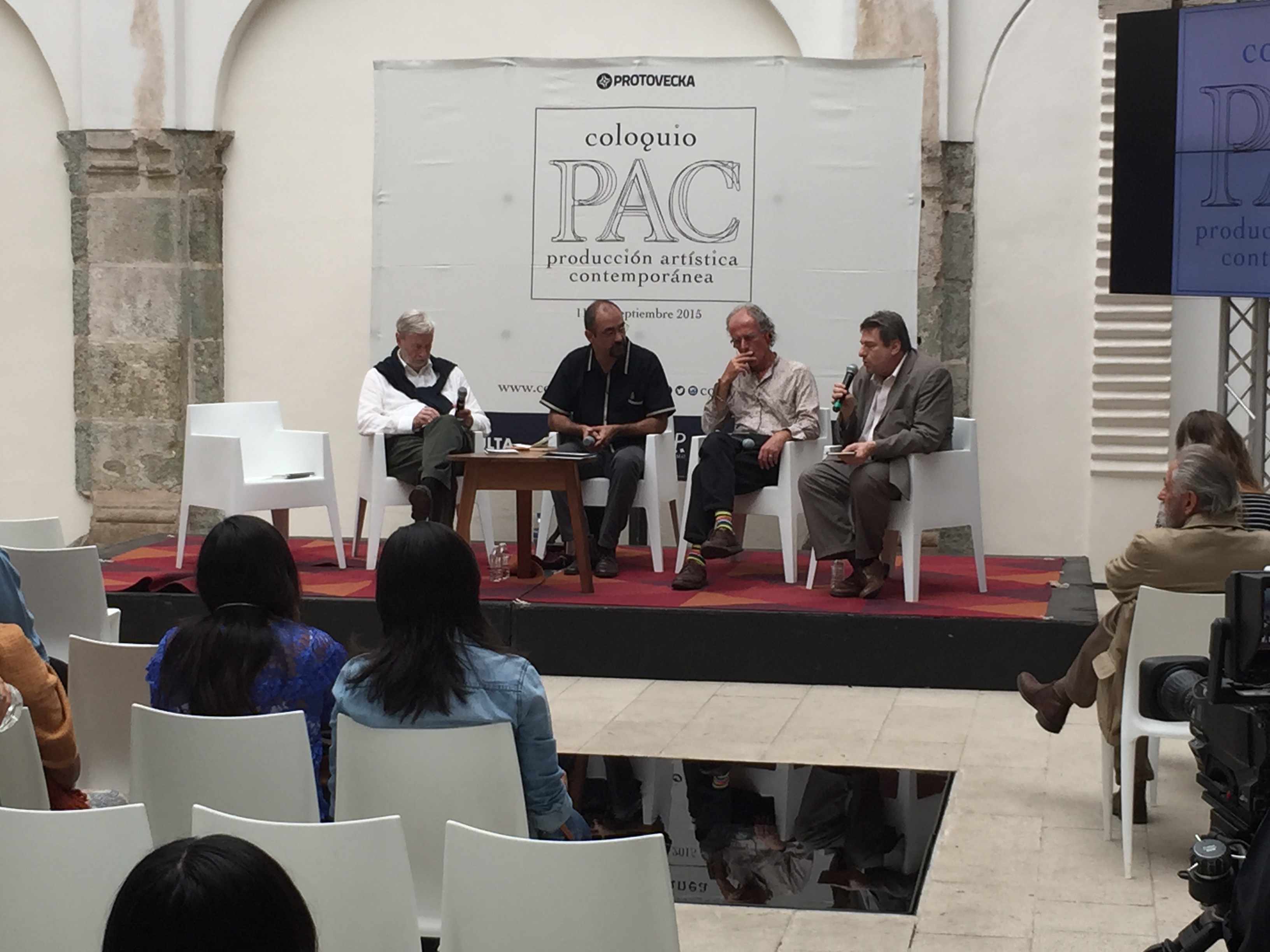 Death is not taking a holiday. I learned on my way to California that my good friend Martha Herr died on Halloween. She had survived breast cancer twice, and this time succumbed to a brain tumor. She was a phenomenal singer, and though she started out working with the Creative Associates at SUNY Buffalo, she spent the bulk of her career teaching at The University of São Paulo, where she became the world’s leading authority on Portugese diction for singers. She and her then-husband John Boudler commissioned an early work from me, Cherokee Songs for voice and percussion. And I am even more grateful to her for having made a recording for me of one of my best works, Scenario (2004) for soprano and soundfile, based on a wild S.J. Perelman text. I had lost touch with her and hadn’t seen her in years when she started teaching as a sabbatical replacement at Bennington, and she started visiting me; and she spent a day with me in the studio getting Scenario down. I’m hoping to release the piece on a CD next year. She was a lovely person, a consummate musician, and fun.
Death is not taking a holiday. I learned on my way to California that my good friend Martha Herr died on Halloween. She had survived breast cancer twice, and this time succumbed to a brain tumor. She was a phenomenal singer, and though she started out working with the Creative Associates at SUNY Buffalo, she spent the bulk of her career teaching at The University of São Paulo, where she became the world’s leading authority on Portugese diction for singers. She and her then-husband John Boudler commissioned an early work from me, Cherokee Songs for voice and percussion. And I am even more grateful to her for having made a recording for me of one of my best works, Scenario (2004) for soprano and soundfile, based on a wild S.J. Perelman text. I had lost touch with her and hadn’t seen her in years when she started teaching as a sabbatical replacement at Bennington, and she started visiting me; and she spent a day with me in the studio getting Scenario down. I’m hoping to release the piece on a CD next year. She was a lovely person, a consummate musician, and fun.
Upon my return, Peter Gena wrote to tell me that my graduate medieval music history professor Theodore (Ted) Karp has just died. I’ve written about him here before, as my model for the old-fashioned kind of professor who didn’t feel the need to entertain, but whose dignity and generosity made being in his classroom feel like a rare privilege. It was because of him that I always push the music of Johannes Ciconia (c. 1370-1412), who despite his obscurity was, I think, the first great composer, the one who realized things that music could do (echoes, imitation, form through repetition) that no other art form could do. In the class I took with Dr. Karp we pored over every 15th-century music manuscript in detail, though there are probably new ones now that were undiscovered then. I wrote for him a paper comparing the respective Missa Ecce Ancilla Domini’s of Dufay and Ockeghem (a topic he had assigned, characteristically unsexy but therefore all the more challenging); I still refer to it occasionally.
Martha Herr told me a story about working with Morton Feldman that she didn’t want me to publish, and I had promised not to do so during her lifetime (though she was only a few years older than me). She sang the world premiere of Feldman’s opera Neither – that’s how good she was. There is a section in that piece with constant meter changes of the Feldman variety – 3/8, 6/2, 5/4, and so on – that she found impossible to memorize, so she wrote it out on a long strip of paper and attached it behind the footlights onstage so she could read it when she came to that part. One day the conductor, whoever he was, came to her and pointed out that the entire passage could have been made quite simple if one simply remetered it in 4/4. She took it to Feldman, and said, “Morty, you know this really complicated passage would work out just fine in 4/4.” She says Feldman chuckled and said, “Yeah, isn’t that cool?”

